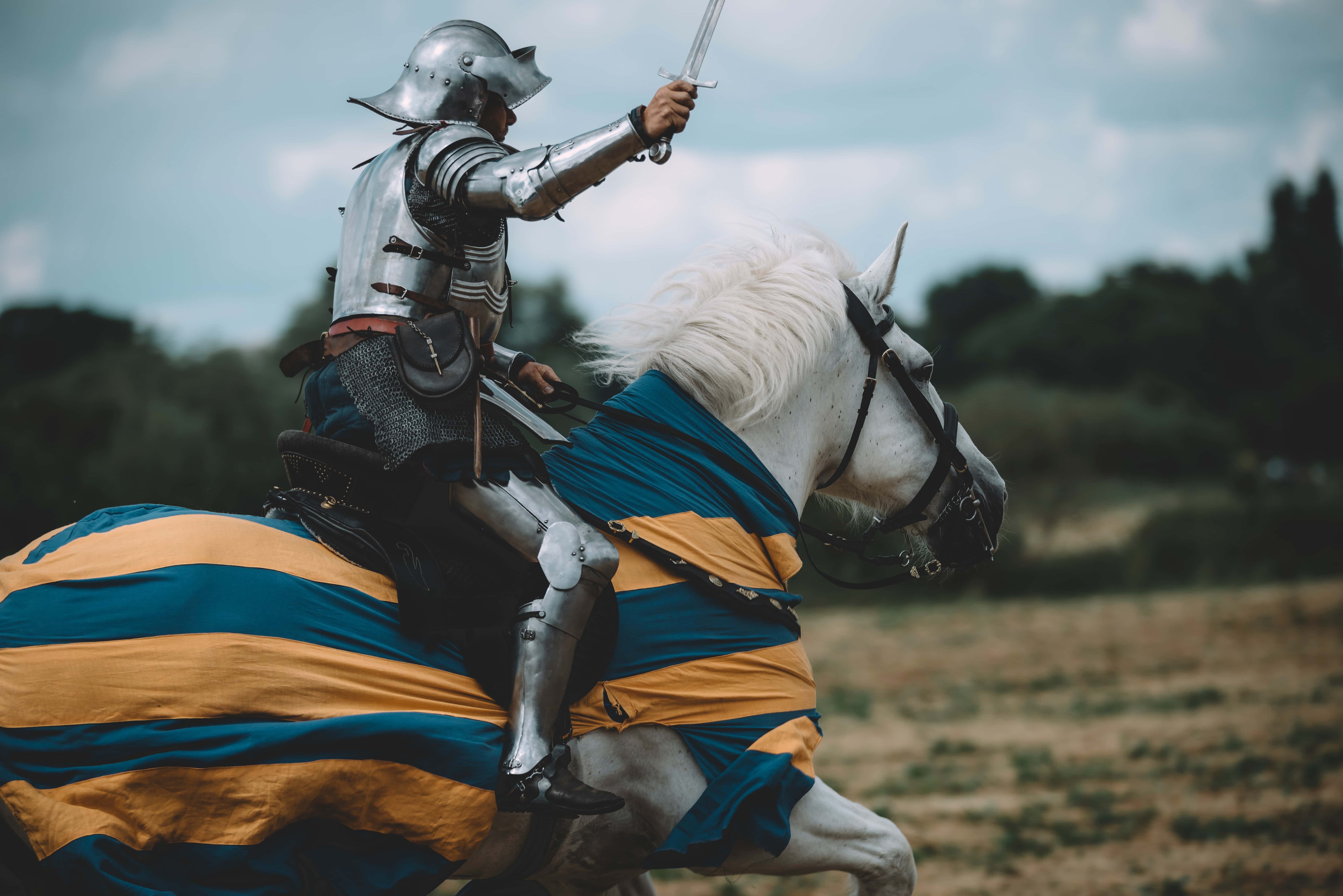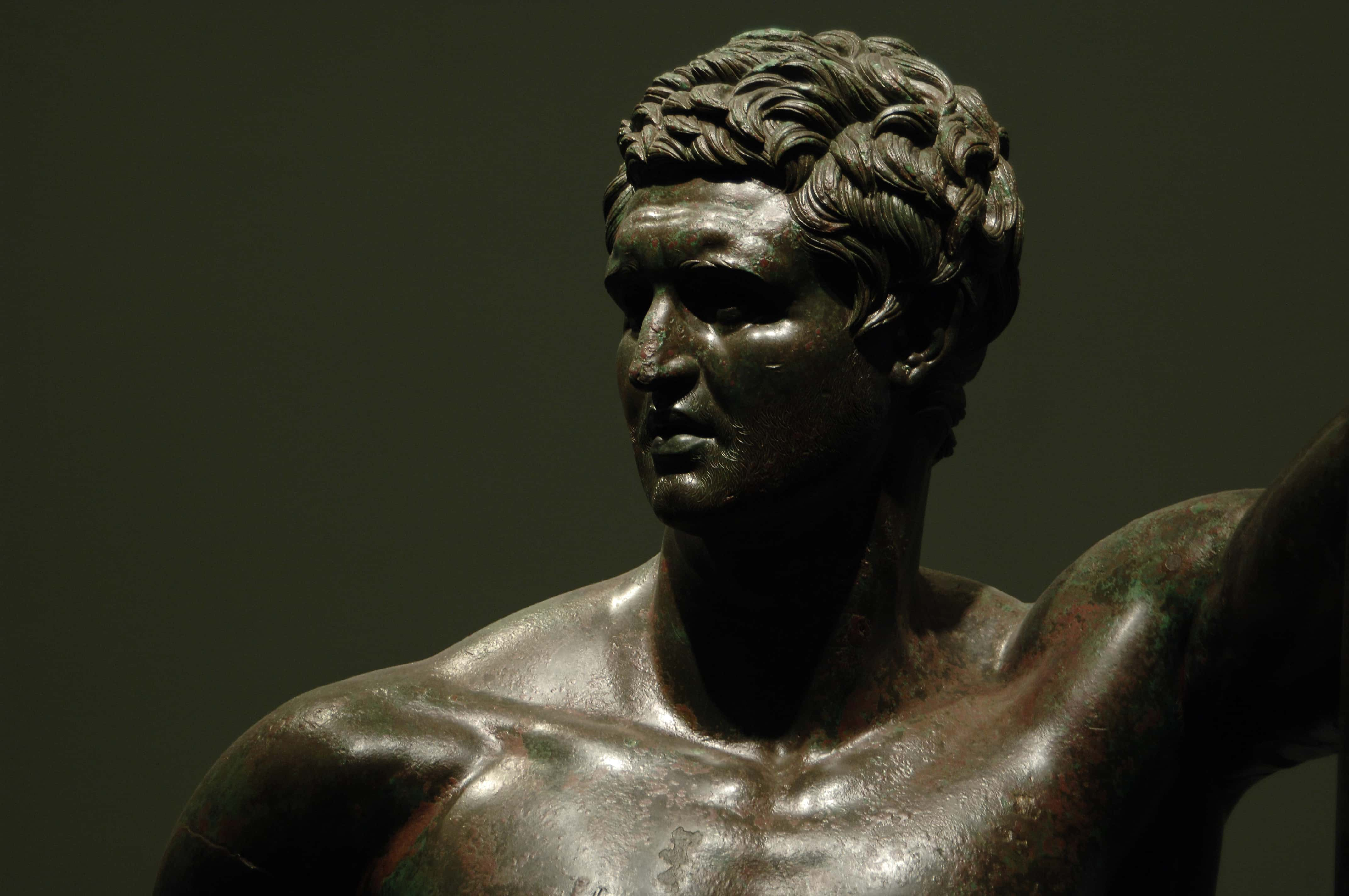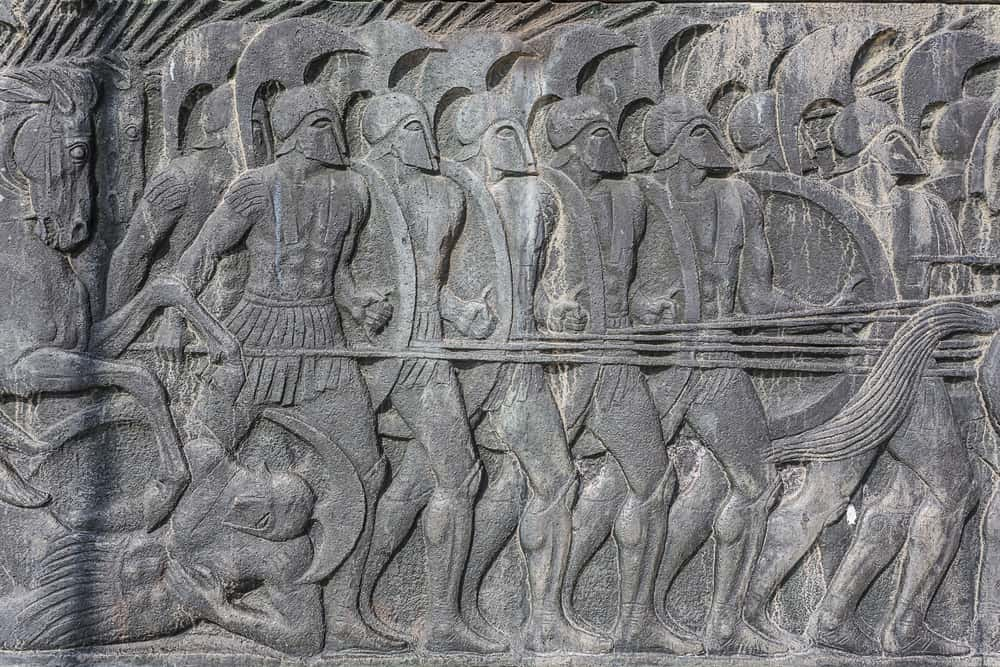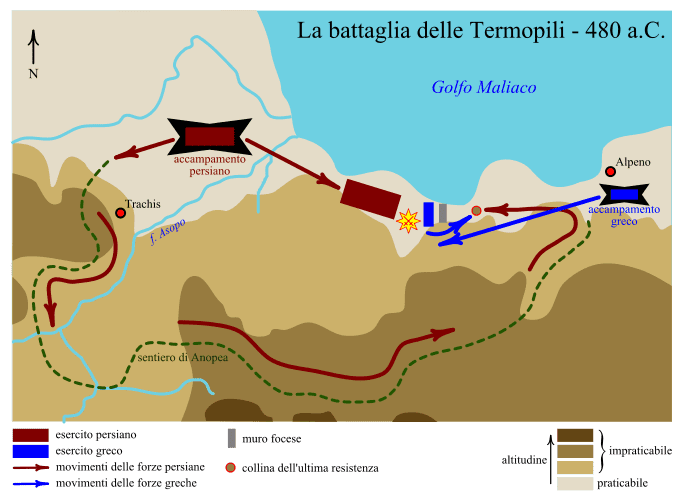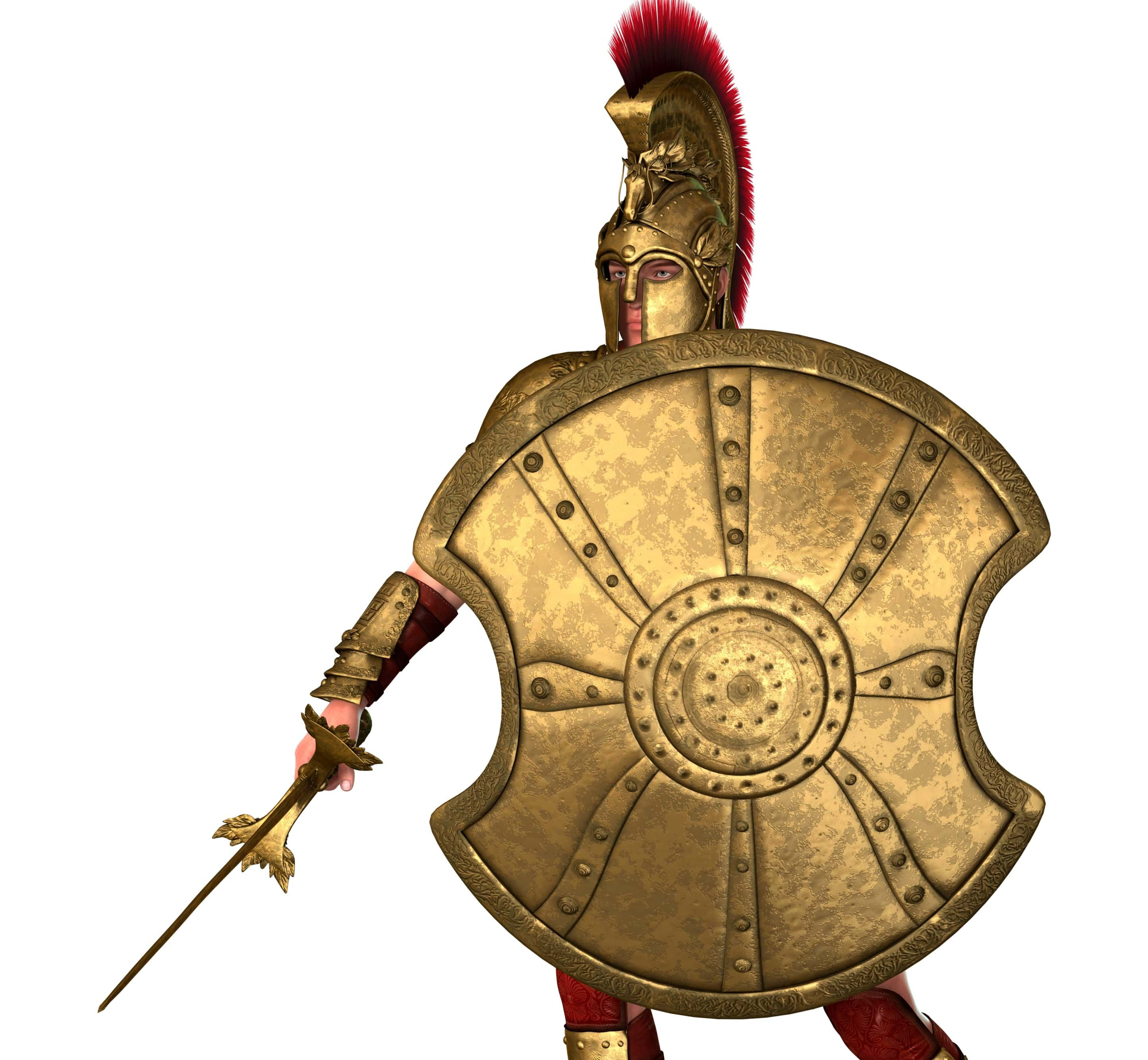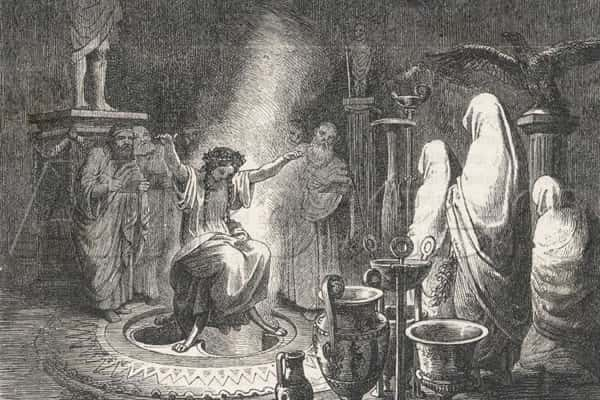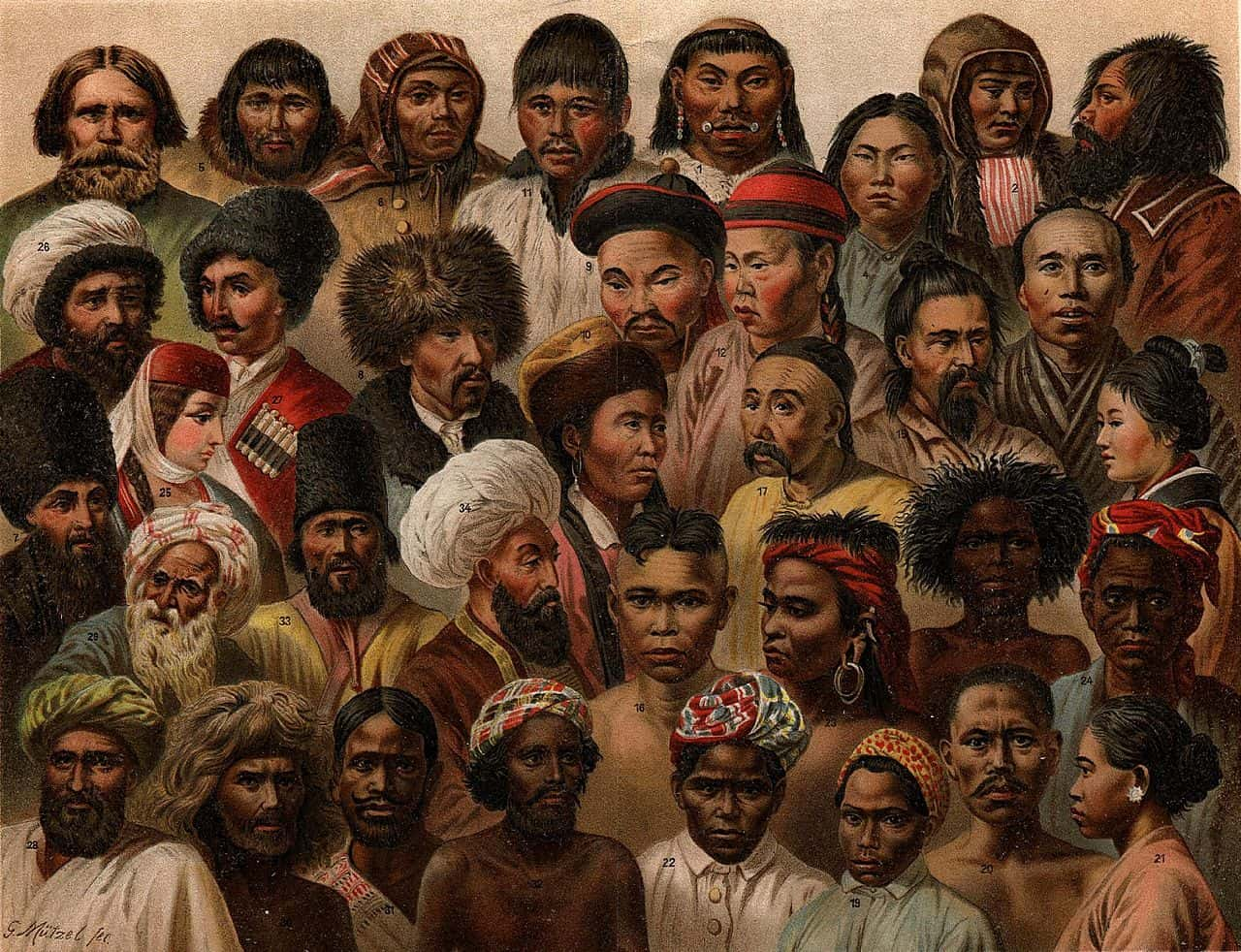Warrior kings are the stuff of legends—yet few people know these tyrants' even darker histories. Some of them were cut down in battle, some succumbed to disease from hard miles out on campaign, and some were betrayed by those they trusted most, but very few of these bloodthirsty tyrants lived long enough to see old age. Read on to discover more about some of the most fearsome warrior kings the world has ever seen.
1. Happy Birthday
Richard III was born on October 2, 1452. Incredibly, he was the twelfth of thirteen children! His parents were Cecily Neville and Richard Plantagenet, also known as Richard of York. Before his dramatic life was finished, the history of England would be forever altered.
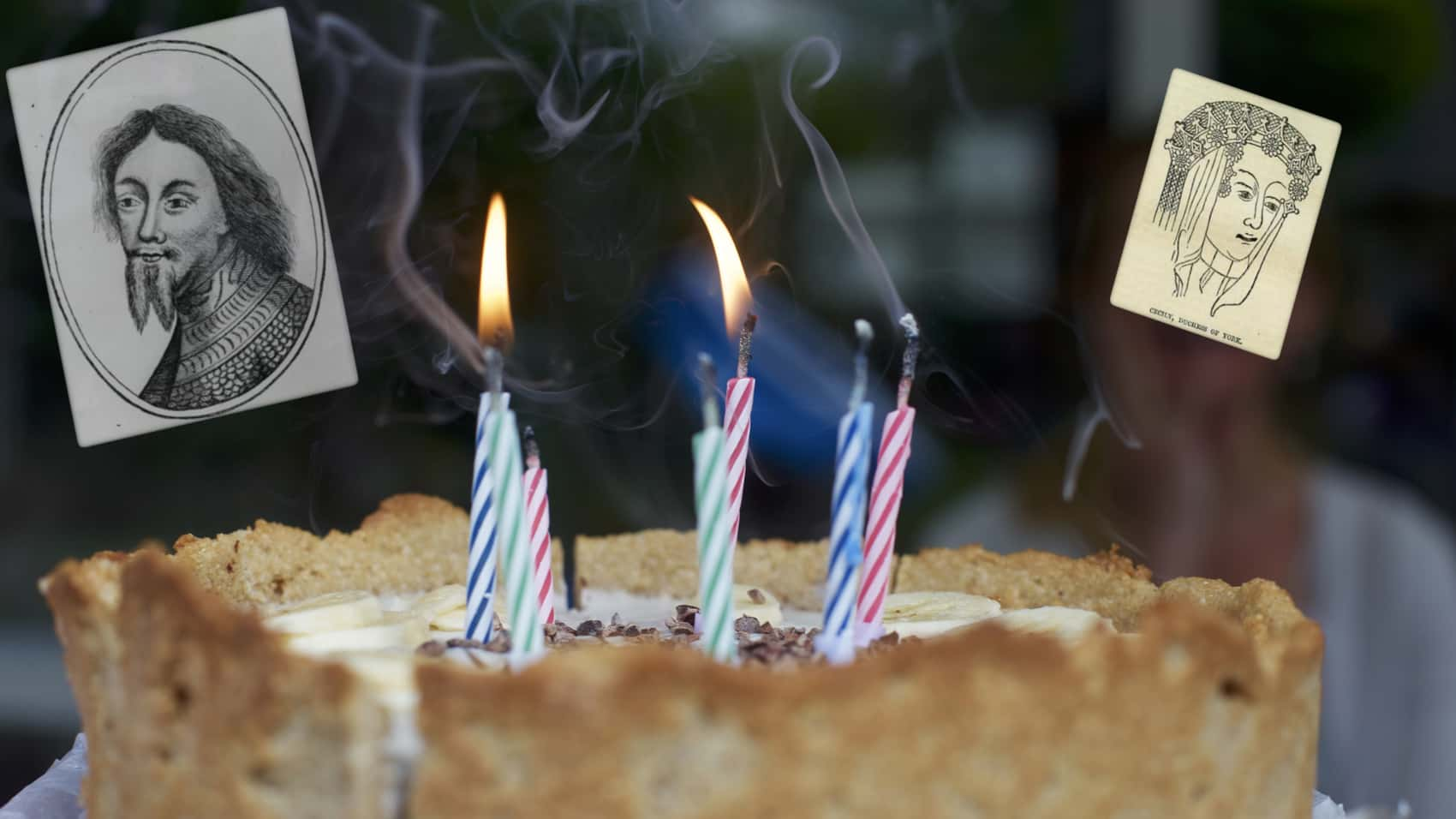
2. Finishing Last
Richard was the last king of both the House of York and the Plantagenet dynasty. Before Richard, the Plantagenets had ruled England for more than three hundred years!
3. Don’t Break My Streak
Richard holds one title that I'm sure he would have preferred to avoid: As of 2018, Richard is the last king of England to die in battle. It’s a record that he seems very sure to keep (unless we just jinxed it by saying that).
 The hollow crown Richard iii
The hollow crown Richard iii
4. A Quick Retreat
Richard's mother sent him and his brother George to stay in the Low Countries (the Netherlands) in the aftermath of their father’s brutal end. They didn’t return to England until their brother Edward's victory at the Battle of Towton, which occurred a year later. Richard was named the Duke of Gloucester at this time.
5. Should Have Gone with Hakuna Matata
Richard’s personal sigil was a white boar, while his knight’s motto was the Old French phrase “Loyaulte me lie.” Translated into English, that means “Loyalty binds me.” How ironic…
6. Now the Winter of Our Discontent is Coming…
Among the many titles given to Richard during his brother’s reign as King was the title “Governor of the North.” Small wonder that he was “the richest and most powerful noble in England.”
7. What a Crappy Deal
A rather non-complimentary tribute to Richard can be found in the dialect known as Cockney Rhyming Slang, in which the expression “Richard the Third” translates into “turd.” Not exactly something to brag about.
8. “I Didn’t Kill My Wife!”
The country mourned when King Richard's wife Anne died suddenly—but at the same time, dark rumors began to spread. Many believed not only that Richard had not only poisoned her, but that he was also going to take his niece, Elizabeth of York, as his new wife. These rumors were so prevalent, in fact, that Richard felt that he had to summon the lords of England and deny them, while also publicly threatening anyone caught spreading the rumors with imprisonment.
9. Royal Bastards
Excluding his short-lived son (young Edward died at 10 years old), Richard is known to have had two illegitimate children before he married Anne Neville (by all accounts he was completely faithful to her). While we know that the two children of Richard were a son named John and a daughter named Katherine, we don’t know their birthdays, the identities of their mothers, or the dates of their deaths.
We only know that John was knighted in 1483 and Katherine was married in 1484.

Sign up to our newsletter.
History’s most fascinating stories and darkest secrets, delivered to your inbox daily. Making distraction rewarding since 2017.
10. A Past Life?
In 1835, US President Andrew Jackson was nearly assassinated by a man named Richard Lawrence. Lawrence had lost his mind and was under the delusion that he was a reincarnation of Richard III. Frankly, we’re just wondering why Lawrence wouldn’t have gone after the English royal family if he really thought he was Richard.
11. My Line Has Ended!
While Richard was the last Plantagenet King of England, he wasn’t the last legitimate male member of the Plantagenet family. That dubious honor went to Edward, the Earl of Warwick, who was the son of the ill-fated George. Edward would be executed by Henry VII in 1499, presumably out of a desire to get rid of all those darn Edwards!
12. I Wasn’t a Senior Citizen!
One very strange trend in the film portrayals of Richard is that he is constantly played by actors far too old for the part! Richard was only 32 when he died, yet he has been portrayed by a 47-yeard old Laurence Olivier, a 51-year-old Vincent Price, and a 56-year-old Ian McKellen. One of the few actors who came close to being age-appropriate was Benedict Cumberbatch, who played Richard in the BBC serial The Hollow Crown when he was 38.
 Richard III, 1955
Richard III, 1955
13. No Way!
One theory posits that Richard was actually the inspiration for the nursery rhyme “Humpty Dumpty.” The theory claims that Richard, being a hunchback in the propaganda of the Tudors, is the one who has a great fall (referencing his death at the Battle of Bosworth Field). However, there is no hard evidence to support this theory.
14. Fakers Beware!
Believe it or not, Richard spent a significant part of his reign clamping down on fraudsters. He imposed severe punishments for those who sold wine and oil while lying about the actual percentages of wine and oil. We can imagine the winos of England appreciated this kind of regulation.
15. What are the Odds?
In 2012, an expedition to find Richard’s remains led to the former grounds of Greyfriars Church. Part of these grounds were now part of a parking lot. When researchers finally found Richard's body, the couldn't believe where it lay: the king's remains were found under a reserved parking space marked “R.”
16. That’s Gonna Hurt in the Morning!
Studies of Richard’s skeleton revealed just how brutal this warrior king's death was. He’d suffered at least ten wounds in those final moments: “four minor injuries on the top of the skull, one dagger blow on the cheekbone, one cut on the lower jaw, two fatal injuries on the base of the skull, one cut on a rib bone, and one final wound on the King’s pelvis, most probably inflicted after death.”
And that’s only the wounds to his bones—who knows how many blows he suffered aside from those.
17. Freedom of Speech Forever!
One of Richard’s more unique laws was, in fact, a ban on censoring books. You read that right! Under Richard’s rule, it was forbidden to block the printing or sale of any book, regardless of the content. How ironic that it would later be writers who would forever stain Richard’s reputation!
18. On a Trip with Uncle
Richard's path to the throne was far from a straight line. He was named Protector of the Realm when his brother, King Edward IV, died in 1483. Edward IV’s son and heir, also called Edward, was declared king. However, barely a month after Edward IV’s death, Richard took his nephew to London due to a supposed plot which he had uncovered. Edward V was placed in the Tower of London’s royal apartments, where he would have been staying anyway to await his coronation. Richard later brought Edward V’s brother, George, to stay with him.
The two young boys had no idea at the time, but as the gates of the Tower closed behind them, their dark fate was sealed.
19. What a Lucky Turn!
On June 22, the day which was meant to be Edward V’s coronation day, Richard instead benefited from a sermon preached in Old St. Paul’s Cathedral. The sermon declared that Edward IV’s children were illegitimate since Edward IV’s marriage to their mother was invalid. Richard was said to be the true heir, and the people of London were convinced enough to petition Richard to be king.
Richard was crowned on July 6, 1483. It remains uncertain just what kind of role he played in the aforementioned events, though they certainly worked out quite well for him.
 The White Queen
The White Queen
20. Two Lives Cruelly Cut Short
Edward and George, the two Princes in the Tower, as they were called, were never seen again after Richard’s coronation. It remains uncertain what really happened to them, though Richard remains the most favored suspect behind their demise.
21. “You’ll Never Take Me Alive!”
Richard personally led a cavalry charge during the Battle of Bosworth Field in a daring attempt to kill Henry Tudor—but that courageous act would be his last. Even his enemies admitted that Richard fought well; they reported that Richard killed several well-known knights and even came within a sword length of Tudor himself before he was surrounded and slain.
22. O Brother, How Couldst Thou?!
Richard and Edward IV’s brother, George, was famously accused of treason and imprisoned in the Tower of London during Edward VI’s reign. It was long rumored his brother Richard was behind the arrest, prevented George from being pardoned, and also had George drowned in a barrel of wine. However, the opposite is actually true! Richard actually tried to prevent George’s death and it was Edward IV who pushed for George to be executed.
 The white queen
The white queen
23. Don’t Mess With Wales
According to some sources, Richard’s death came about when a Welshman named Rhys ap Thomas struck the King’s head with a halberd blade, and it was even more violent than anyone had imagined. Allegedly, “the blows were so violent that the king’s helmet was driven into his skull.”
24. A Traitor! My Kingdom to Kill that Traitor!
Richard allegedly spoke a single word in his final moments: “Treason!” He shouted this as he was fighting to the death, but it still isn’t confirmed why this word was on his lips. Most historians claim that this was likely due to the betrayal of Richard by Lord Stanley and his forces.
 The Hollow Crown
The Hollow Crown
25. A Violent End
After Richard was killed, his body was subject to humiliation by the victories Tudor forces. The accepted belief (we can’t be 100% sure) is that Richard’s body was stripped naked and either dragged behind a horse or slung over it. Richard was then buried with the usual ceremony of an English King—Henry VII actually paid the equivalent of around £38,000 for a marble monument to his fallen rival.
However, the location of Richard's grave was then lost, and so it remained for the next 400 years.
26. Good News/Bad News
From England to Macedonia, Alexander the Great was probably the greatest warrior king of all time—and his birth was met with several ominous signs. On the date of his birth, his father, King Philip was greeted with some good news. His general Parmenion had defeated the Illyrian and Paeonian armies, and his horses won at the Olympic Games. However, also on the date of his birth, the Temple of Artemis, one of the Seven Wonders of the Ancient World, burned down.
It seemed as though Alexander would live a life filled with victory—and catastrophe.
27. A Man and His Horse
When Alexander was ten years old, he was brought a horse by a trader from Thessaly. The horse proved impossible to tame, and his father ordered it sent away. Alexander noticed that the horse was afraid of its shadow and pleaded for permission to tame the horse. Much to the joy of Philip, he did. As a reward for his courage and ambition, Philip bought him the horse which he named Bucephalus or “Ox Head.”
Bucephalus stayed by Alexnder's side through countless campaigns, and when the horse died in battle at the ripe old age of 30, Alexander named the city Bucephala after him.
28. Philosophical Education
At age 13, Alexander the Great was tutored by the great philosopher Aristotle. His tutelage lasted for about three years, and Aristotle taught him government, philosophy, politics, poetry, drama, and sciences.
29. A Pleasant Odor
In historian Plutarch’s book Lives of the Noble Greeks and Romans, he reported that Alexander possessed a “most agreeable odor,” and that his breath and body perfumed his clothes. Good to know!
30. Alexandropolis
When Alexander was just 16, King Philip instigated a war against the Byzantion, and as both heir apparent and Prince Regent, Alexander was left in charge—but he never expected what happened while he was gone. In Philip’s absence, Alexander defended Macedonia against a revolt by the Thracian Maedi and drove them from their territory. He settled the area with Greeks and named the city Alexandropolis. How's that for a sweet 16?
31. Up for Grabs
When King Philip was assassinated in 336 BC, some circles suspected that Alexander and his mother had a hand in his stabbing. With the throne now free for the taking, Alexander quickly eliminated any enemies who stood in his path. With help from the Macedonian army, he murdered all other potential heirs to the throne.
His mother, the beautiful and ruthless Queen Olympias, helped Alexander’s quest by killing King Philip’s daughter and leading his wife Cleopatra to commit suicide.
32. Undoing the Knot
In a legend similar to Arthur and Excalibur, a Greek oracle foretold that whoever was able to untie the Gordian Knot would go on to become the true ruler of Asia. When Alexander reached the town of Gordium on his Asian campaign, he decided to attempt the knot. He initially tried to untangle the knot, but when his patience ran out, he simply took his sword and sliced through it.
33. You’re Blocking My Sun
One of Alexander's most famous encounters was with a philosopher named Diogenes the Cynic. As the legend goes, Alexander sought out Diogenes, who was known for his rejection of social norms and allegedly slept in a large clay jar. He approached Diogenes in a public square, and asked if there was anything that he, Alexander, could do for him with his riches.
Diogenes's blunt response left him stunned: “Stand aside; you’re blocking my sun.” Alexander was so amused by Diogenes's attitude that he reportedly told his generals: “If I were not Alexander, I would be Diogenes.”
34. Exile
When Alexander’s father fell in love with and married his general’s niece, Cleopatra, Alexander’s place as heir was threatened. Alexander was only half Macedonian, but any child produced by Cleopatra would be fully Macedonian, and potentially have a stronger claim to the throne. Then, as if things couldn't get any worse, Alexander suddenly found himself fighting for his life. After a falling out with his father at the wedding banquet in which Alexander was nearly stabbed to death, Alexander and his mother fled Macedonia.
With help from a family friend Demaratus, Alexander was able to return home six months later.
35. A Sweet Preservation
Like many details of his death, how Alexander’s body was preserved during the time before his transfer to Egypt is one of speculation, but in 1889, E.A. Wallis Badge put forth the idea that he was preserved in a vat of honey. Honey is known to have a preserving effect, and it was a practice often used in ancient cultures to embalm bodies.
The honey in Alexander’s coffin would have prevented the body from decomposing during the long journey to Egypt.
36. Love at First Sight
According to some historical reports, Roxanne, Alexander the Great’s first wife, was possibly the only woman he ever loved. There are different versions of their meeting. In one account, he came across Roxanne among Bactrian captives after their surrender, and he immediately fell in love. In historian Plutarch’s version, he first sees her among the dancers at a banquet held in his honor.
37. Founder of Cities
As a means of recognizing his numerous conquests, Alexander would found cities around his military forts and name them Alexandria. All in all, there were more than 70 cities named Alexandria, the most famous of which is Alexandria in Egypt. Alexandria was founded at the mouth of the Nile river in 331 BC and it's the second-largest city in Egypt today.
38. They Don’t Match
Alexander the Great had an eye condition called heterochromia iridium which means he had two different colored eyes. It’s caused by a lack of pigmentation in the iris of one of the eyes. The condition is more common in animals such as dogs and cats, but several celebrities like Kiefer Sutherland, Kate Bosworth, and Mila Kunis have it.
39. Fighting for Independence
Through years of warfare, Alexander’s father had united the Greeks into the Corinthian League, with him at its head. However, once Alexander took the throne, the Greeks weren't about to let this punk kid take over without a fight. Athens wanted to rule the league, and several other Greek States launched rebellions. Alexander led his army south and forced Thessaly to recognize him as leader.
By the fall of 336, he had secured treaties from all of the Greek city-states in the league and was given full military power to conquer Persia.
40. Man of Many Names
Alexander the Great had a number of other nicknames in his lifetime. He was often called the Accursed, the Conqueror of the World, the Philosopher-King, and the Madman of Macedonia, among others.
41. Conquering Persia
Once he finished taking care of his housekeeping at home, Alexander left the General Antipater in charge as regent and set out for Persia. He easily won the first battles at the Granicus River and Sardes, but met with challenges in the cities of Miletus, Mylasa, and Halicarnassus. In 333 BC, Alexander’s army met the Persian King’s massive army near Issus in Turkey. It was a day that would go down in history.
Despite being outnumbered in men, his experience and determination were unmatched by the King’s army, and King Darius was forced to flee with his troops leaving his family behind. Darius’ mother was so ashamed by the Persians' utter defeat that she reportedly disowned her son and adopted Alexander instead.
42. A Dictator’s Obsession
Former Cuban leader Fidel Castro was a great admirer of Alexander the Great’s military accomplishments and adopted the name Alejandro in tribute to him during the revolution of the 1950s.
43. Son of Zeus
Heracles, or Hercules, was one of Alexander’s greatest idols and influences. He so revered the mythical figure that he took to calling himself the Son of Zeus, just as Heracles did, and bragged that he was descended from the demigod on his father’s side of the family.
 Hercules (1997), Walt Disney Pictures
Hercules (1997), Walt Disney Pictures
44. There’s Always Time for Philosophy
Alexander the Great had a great love for philosophy. He apparently loved it so much, that he briefly paused his military campaign in India to have philosophical discussions with the gymnosophists, or “naked philosophers." Three guesses as to why they were called that...
45. Hair Dye Rarer than Diamonds
Alexander the Great liked to stay fabulous. He would wash his hair with saffron to keep it gleaming and orange. This wasn't too crazy, as the greeks commonly dyed their hair, eyebrows, and facial hair—but Alexander's choice of dye was a little extra. At the time, saffron was more expensive than gold!
46. Undefeated
From his first battle at age 18 until his death, Alexander was undefeated in battle. He had a reputation for leading his men with great speed, which allowed smaller forces to reach and break enemy lines before his opponents were ready. In 334 BC Alexander fortified his own kingdom in Greece, and then crossed into Asia, where he won several more battles.
His tactics are still studied in military colleges today.
47. Political Maneuvering
At the Council of State held following Alexander’s death, the generals decided to split the empire between Alexander’s mentally-challenged half-brother and Roxana’s child, if it was a boy. The boy was to be placed under the regency of the powerful general Perdiccas until he was old enough to rule, but Perdiccas had a more devious plan in mind.
In an attempt to strengthen his own position as ruler, Perdiccas married Alexander’s sister Cleopatra, which led to war with another of Alexander’s generals, Antipater, and his ally Ptolemy. Before Perdiccas could battle Ptolemy, he was assassinated at the hands of his own soldiers, and Antipater declared himself super regent of the empire.
This began a brutal conflict between the generals known as the wars of the Diadochi, in which they all made a grab for power and land.
48. End of the Line
When Antipater died in 319 BC, Polyperchon, another powerful general, succeeded him. Antipater’s son Cassander had no intention of letting this stand, and began a war with Polyperchon, forcing him to flee to Epirus and join Alexander's mother, wife, and son. Cassander captured Olympias in Pydna, and in 316 BC, had her put to death.
He also captured Roxana and Alexander IV and had them both executed. Their end officially ended Alexander’s line.
49. Cause of Death Unknown
To this day, the exact cause of Alexander’s death is unknown. In 323 BC, he became ill after drinking a bowl of wine at a party and two weeks later he died. Due to the nature of his father’s death, the people surrounding Alexander became immediate suspects. As best as modern science can discern, the most likely causes of death could have been malaria, lung infection, typhoid fever, or liver failure might have killed him.
50. The Roman Connection
Greek Culture is said to have had a tremendous influence on Rome. There are numerous similarities in their myths and their artwork, and Caesar trained his armies in the Spartan way. Caesar and his nephew Augustus greatly admired Alexander the Great, and whenever they stayed in Alexandria, they would visit his tomb to pay their respects.
51. Divine Prophecy
Calanus, who was one of the Indian philosophers with whom Alexander met in Taxlia (North Pakistan), decided to follow Alexander. When he became ill in Persies (Southwest Iran), he told Alexander that he planned to commit suicide by setting himself on fire. As he entered the flames, he allegedly told Alexander that when they met again in Babylon, he would salute him then.
The words confused people at the time, but not long after, Alexander died...in Babylon. I wonder if Calanus was there to salute him?
52. The Sport of Drinking
After the death of Calanus, Alexander decided to organize an Olympics in India to honor him. Not being familiar with Greek sport, Alexander changed his plans, and created a wine-drinking contest instead. Unfortunately for the contestants, none of them were used to drinking alcohol, and all 41 of them died on the spot.
The winner, a Greek soldier by the name of Promachus drank the equivalent of 13 liters of wine and died of alcohol poisoning a few days later.
53. What did He Say?
Because Alexander’s legitimate child hadn’t been born yet at the time of his death (his other son’s mother was a concubine) there was no clear successor. On his deathbed, his generals reportedly asked Alexander to whom he would leave his kingdom, and there is some debate as to what he said. Some think he said “Kratisto,” which means “to the strongest” in Greek, but others thought he said “Krater'oi” meaning to Craterus, who was the commander of his army.
The vagueness of Alexander's final words would have tremendous consequences—his enormous empire was thrown into the Wars of the Diadochi, which would last decades.
 Shutterstock
Shutterstock
54. Does That Make Him the Lion King?
Alexander was far from the first Greek warrior king. The legendary Leonidas of Sparta lived centuries earlier. His name means “son of the lion” in Ancient Greek. It’s safe to say that his dad had a bit of an ego.
55. Famous Lineage
Leonidas was the 17th king in the line of Agiad kings. This dynasty claimed to be descended from the Greek hero Heracles—that’s Hercules for you Disney fans out there. So he's got that in common with Alexander, at least.

56. Well, This Took a Turn…
Leonidas’s father was King Anaxandridas of Sparta and we sadly don’t know the name of his mother. However, we do know that Leonidas’s mother wasn’t just Anaxandridas’ wife. She was also his niece, according to Herodotus. We can see where George R.R. Martin gets his inspiration from…
57. What About Us??!
Contrary to the myths about Thermopylae, Leonidas I and his 300 Spartan warriors were accompanied by many other Greeks. United in their desire to keep the Persian King Xerxes out of Greece, the size of the Greek forces at Thermopylae in 480 BC was estimated to be between 3,000 and 7,000 soldiers. That’s at least 2,700 more soldiers than usually get praised!
While historian Herodotus claimed that the Persian army numbered in the millions, it's far more likely that there were between 70,000 and 300,000 in their military force.
58. Wait, You’re Not Trolling?
Under Leonidas’s overall command, the allied Greek army was said to hold off the Persian army for over a week at Thermopylae. To be fair, the first four days consisted of the Persian army sitting around waiting for the Greeks to stop joking around and just surrender. Safe to say the Greeks defied such expectations!
59. Date of Death
If the historical records can be believed, Leonidas died on August 11, 480 BC.

60. Talk About Overkill
According to Herodotus, after the Battle of Thermopylae, Leonidas’s body was brutally desecrated by the Persians. His head was severed from his body, which was then crucified. No doubt Robb Stark would sympathize with a fate like that!
 300
300
61. He was a Senior Frigging Citizen?!
Despite what 300 would have you believe, Leonidas was not a man in his prime when he marched off to fight at Thermopylae. According to the sources, Leonidas was around 60 years old! Most men his age nowadays are busy getting over their mid-life crises and considering where they’ll retire!
62. It was a Great Decade
By the time of Leonidas’s death, he had ruled Sparta as King for fewer than 10 years, starting around 489 BC and ending in 480 BC.

63. Get Out While You Can
Why Leonidas famously sent away most of his allies when the Persians encircled Thermopylae is actually a debated topic to this day. One accepted theory, pushed by Herodotus, is that Leonidas was trying to save as many Greek soldiers as he could from the inevitable massacre by the Persians. He, meanwhile, would form a vanguard that would give the retreating Greeks, including the Thespians and Thebans, a chance to get away and fight another day.
Another theory is that Leonidas simply wanted the Spartans to have the glory of fighting to the death. If that latter theory is true, Leonidas must have been very irritated when the Thespians and Thebans stuck around as well!
64. I Wasn’t That Short!
In 1955, the Greeks erected a bronze statue in Leonidas’s likeness at Thermopylae. No doubt he’d have been wondering what took them so long.
65. Sick Comeback
If you’ve seen 300, you might remember how the Greeks are ordered by a messenger sent by the Persians to give up their weapons, whereupon Leonidas answers “Come and get them!” Don’t give too much credit to the movie writers; that exchange is said to have actually happened at the real Battle of Thermopylae, at least according to Plutarch.
Leonidas’s laconic reply was also engraved into a plaque that rests under his statue at Thermopylae.
 300
300
66. Awkward Truth Bomb
Excluding their allies, Leonidas and the Spartan warriors weren’t even the only Spartans who arrived at the Battle of Thermopylae. What few people mention is the fact that these 300 Spartans were said to have brought 900 helots (slaves). Interesting how Frank Miller forgot to include that fact! It’s hard to say that Leonidas was fighting for freedom when he and his men were being served by hundreds of slaves who were presumably forced to die alongside their 300 masters.
67. How Unfortunate
If the historians can be believed, the Oracle of Delphi predicted Leonidas's death. When word came that King Xerxes’ massive military force was setting out for Greece, the Spartans consulted the Oracle to figure out what to do. The Oracle warned them that either the Spartans mourn a dead king, or the city would be ravaged by the Persians.
Assuming Leonidas believed the Oracle to be the divine teller of fate, he must have known he wasn’t coming back alive, yet he marched anyway.
68. Keeping it in the Family
Leonidas ruled as a King alongside his half-brother, Cleomenes. When it came time for Leonidas to choose a wife, the Spartan king took dark inspiration from his father’s depraved inclinations. He could have chosen any woman in Sparta, yet he chose Gorgo, Cleomenes's daughter and his own niece.
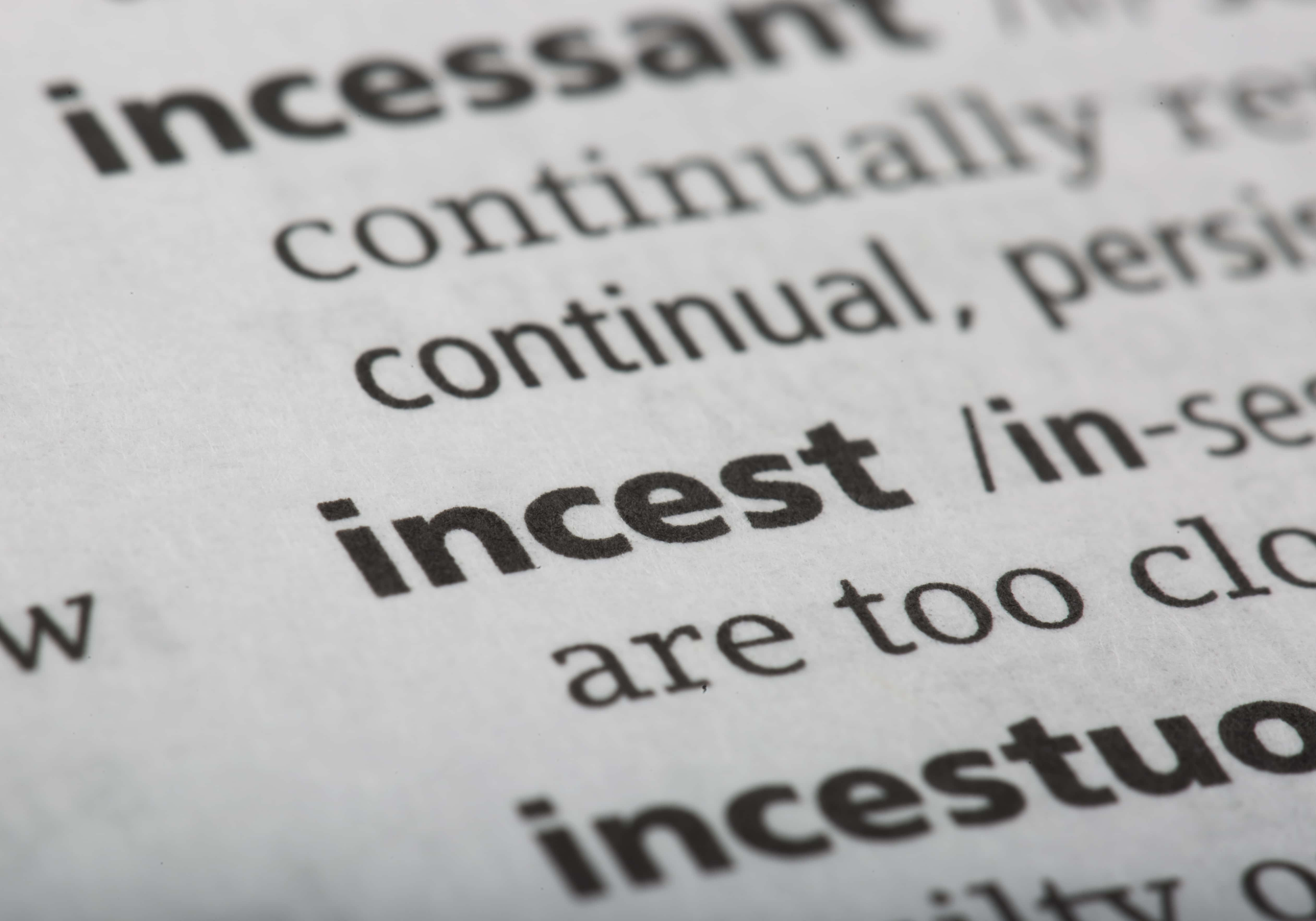
69. That was Cold-Blooded!
To make Leonidas and Gorgo’s wedding even more awkward, keep in mind that they only got married after Cleomenes had been deposed and imprisoned on the grounds that he’d fought against his co-king. Leonidas was fully involved in the imprisonment of his half-brother, who was also declared to be insane.
According to the histories, Cleomenes would later be found dead in his cell. His death was reported as “suicide by self-mutilation.” It seems pretty suspicious if you ask us. This makes us only imagine whether Leonidas proposed to Gorgo before or after she found out about her dad’s death—which again, Leonidas may or may not have been involved with.

70. He Had To Earn His Name
No list of warrior kings would be complete without Genghis Khan. He was born with the first name Temujin around 1162 AD; he had to earn the name Genghis Khan.
71. He Was Born In Blood
Legend has it that Genghis Khan was born with a blood clot clenched in his fist, foretelling his emergence as a great and powerful leader. Looks like he had blood on his hands from the very beginning.

72. Becoming A Man Early
Tragedy struck when Genghis Khan was just a child. The Tatars, a rival tribe, poisoned his father Yesugei. Genghis, who had been away, went back home to claim his position as chief of the tribe, but the tribe refused and abandoned Genghis' family instead.

73. Born Under A Bad Star
The troubles still weren't over for the young Genghis. He also ended up being abducted by an enemy clan as a teenager, and had to make an escape to win his freedom and continue his rise to power.
 Wikimedia Commons
Wikimedia Commons
74. The Decimation of Persia
Throughout his campaigns, Genghis Khan killed so many Persians (modern-day Iranians) that the population of Persia didn't return to pre-Mongol numbers until the 1900s, nearly 700 years later.

75. Now You See Me
No one knows what Genghis Khan looked like. The only images of the Khan started appearing after he died, so it's unclear how accurate they are to his likeness. In fact, Genghis specifically forbid anyone to craft his likeness.
 GettyImages
GettyImages
76. Was He Ginger?
Despite our cultural image of Genghis Khan as an Asian warlord, his appearance may have been truly unexpected. He is generally described as tall with a long flowing beard, but the Persian historian Rashid al-Din also claimed the Khan had red hair and green eyes. Al-Din never met Genghis in person, so we have to take it with a grain of salt, but these features weren't uncommon in the Mongol population at the time.
 Flickr
Flickr
77. Cry Me A River
It's said that Genghis Khan had those he trusted most divert a river over his final resting place, ensuring no one would disturb his eternal slumber. Now he sleeps with the fishes.
78. No Man's Land
Before Genghis Khan united Mongolia under a single banner, it was little more than a barren land of warring, nomadic tribes. It took years of hard labor, but he finally did it and earned his "Khan" title. Then he turned his full attention to expanding the newly-minted empire.
79. You Shall Not Pass
Ikh Khorig, or Great Taboo, is a 240 square kilometer piece of land in the Mongolian Khentii province that was declared holy by Genghis Khan. Only an elite tribe of warriors called the Darkhad and their families were allowed to enter, and anyone else caught doing so was put to death. It's rumored that Genghis Khan was buried somewhere in Ikh Khorig. Who's up for a scavenger hunt?

80. You've Got Mail
Genghis Khan created the first international postal service, allowing people to mail parcels and letters to friends and family in other countries without having to hire specialized couriers. The postal service was similar to the American Pony Express.
 Sgt Ben Eberle/Wikimedia Commons
Sgt Ben Eberle/Wikimedia Commons
81. Live Your Truth
Genghis Khan was tolerant of individual beliefs, encouraging religious freedom amongst his subjects. It didn't matter who you believed in, because Genghis Khan believed in you.

82. Financial Advisor To Genghis Khan
Yelu Chucai, one of Genghis Khan's most trusted advisors, suggested that the Khan tax people instead of just, you know, killing them. This became a cornerstone of Genghis' conquests. Death and taxes indeed.
83. Charity Case
Genghis Khan was a brutal warlord, but also a generous ruler. He was among the first global leaders to exempt the clergy and the poor from taxation.
 Sayf al-Vâhidî. Hérât. Afghanistan/ Wikimedia Commons
Sayf al-Vâhidî. Hérât. Afghanistan/ Wikimedia Commons
84. Show Me the Money
Genghis Khan's face appears on Mongolia's currency. Mongol, more like Mongoals!

85. The Children Of The Great Khan
Genghis Khan is the most successful biological father of all time, with nearly 16 million descendants.

86. Foresight
Genghis Khan believed a man's legacy was measured in the children he left behind. That explains the why of the previous fact, but not the how. Who has that much time? Conquering must be easier than it sounds.
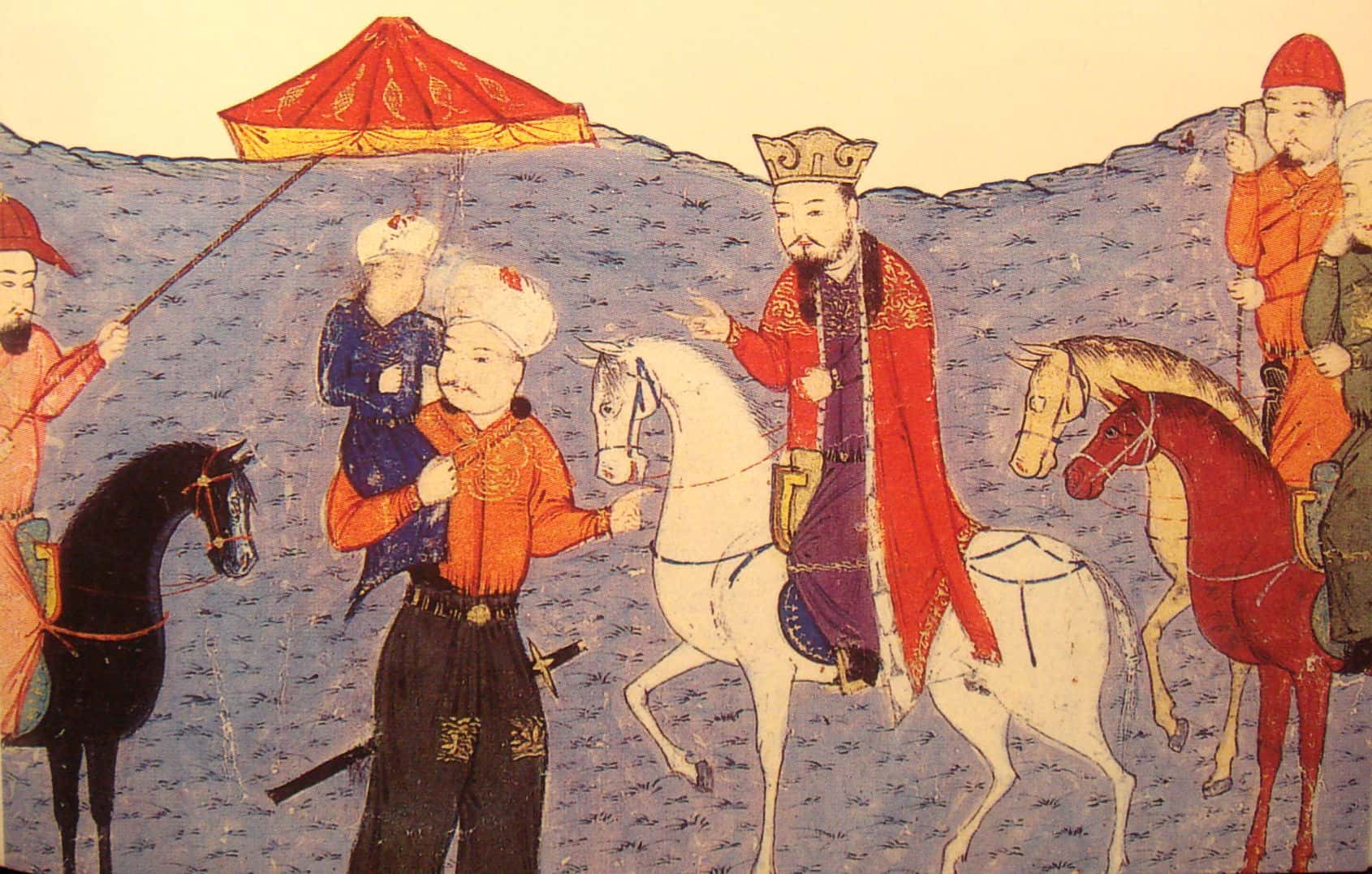 Rachid al-Din/Wikimedia Commons
Rachid al-Din/Wikimedia Commons
87. Father Figure
Nearly 8% of Asian men are descended from Genghis Khan. That's nearly 350 million men with one common ancestor.
88. Influential in India
Shah Jahan, the Indian Shah responsible for building the Taj Mahal, was actually a descendant of Genghis Khan.

89. Like Father…
Genghis Khan had four legitimate sons, all of whom heavily participated in the Mongol conquests. His third son Ogedei became the Khan when Genghis finally died, and he continued his father's conquests of Asia and Europe. Don't you hate it when your parents force you into the family business?
 Giorgiomonteforti/Wikimedia Commons
Giorgiomonteforti/Wikimedia Commons
90. Marriage Proposals
Ghengis Khan would often marry his daughters off to local rulers, and then use these daughters to rule in his stead. You see, he would make his new son-in-law a military leader and send him off on a campaign, install the daughter into a position of power at the center of the nation, and then wait for the husband to die in battle.
It was a win/win for the Khan, who got new lands and new soldiers for his wars. For the dead husband, well, not so much.

91. Empressive
Though Genghis Khan took many wives throughout his life, his only Empress was his first wife Borte. Genghis had actually been betrothed to Borte since the tender age of nine. Now that's loyalty.

92. The Original Mr. Worldwide
Genghis Khan's Empire spanned many modern countries—even continents. From Eastern Asia into Eastern Europe, Genghis Khan amassed one of the largest empires history has ever seen.
93. Game Plan
Genghis Khan was a master tactician, often employing clever tricks to defeat his enemy. Some examples include false retreats to bait enemies into ambushes, and tying sticks to horses' tails to kick up dust storms equal to those kicked up by large armies. They would also tie dummies atop horses to make it look like a solider was riding into battle.

94. Happy Death Day
We still don't know how Genghis Khan died. We do know it was in August 1227, but the rest remains a mystery. Theories range from an illness to a fall from his horse to a gruesome battle wound. He was about 65 years old.

95. Death Everywhere
World War II was the deadliest war in the history of mankind. However, the Mongol invasions proved almost as deadly, even though the world's population was just one-fifth of what it was during WWII.

96. Reading Is for Nerds
The conquests and destruction of the Mongol Empire didn't end with the great Genghis Khan's death in 1227, however. Decades later, in 1258, the Mongols were still at it in grand style. In fact, they pretty much ended the Islamic Golden Age when they destroyed Baghdad that year. Survivors of the sacking (there weren't many) gave truly sickening reports of the carnage: “The waters of the Tigris ran black with ink from the enormous quantities of books flung into the river and red from the blood of the scientists and philosophers killed.”
Throwing books in the river? Killing scientists and philosophers? Not cool, Mongols. But very on-brand.
 Wikimedia Commons
Wikimedia Commons
97. Frenemies
Most of Genghis Khan's most trusted generals were his enemies at one point or another.
 GettyImages
GettyImages
98. Squeaky Clean
The Mongols didn't like to spill noble, highborn blood on the ground, but they also really liked killing. To get around this, they came up with some gruesome loopholes: they loved to bend backs until they snapped, and frequently poured molten silver into the orifices of their victim, Game of Thrones style. Another favorite? Roll the victim up in a rug and trample him with a horse. No mess to clean up!
 Flickr
Flickr
99. Cold-Hearted
Genghis Khan's armies killed an estimated 40 million people. In fact, his armies killed so many people that he cooled the planet and reduced the carbon footprint of human beings. While effective, this is definitely not the solution to climate change.

100. Revolutionary
Khan often used spies to incite civil wars and revolutions within opposing empires to weaken them for his invasions.

101. Hard Feelings for Genghis Khan
The Khan never let a slight go unpunished. The Khwarezmid Empire killed his messengers when he offered to open up trade routes. Khan's response was one of the most horrific campaigns in history. Before he was finished, more than 90% of the Khwarezmid Empire was dead.
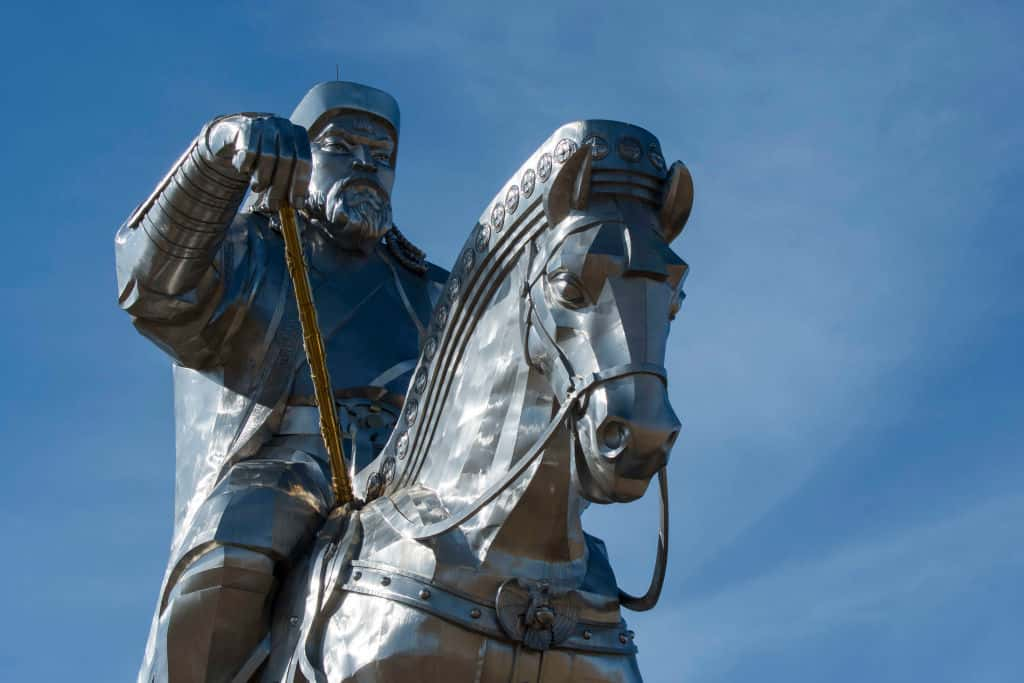
102. A Feast for Crows
A legend says that once, when the Mongol horde defeated the Russian forces, they celebrated their victory in gruesome style. They took all the survivors of the battle, laid them on the ground, and put a wooden slab on top of them. The Mongols then proceeded to eat a victory feast over their enemies, watching as the last of the survivors were slowly crushed to death beneath them.
 Wikimedia Commons
Wikimedia Commons
103. Mommy Issues
Toregene Khatun was one of Genghis Khan's daughters-in-law, and she had almost as brilliant and brutal a reputation as Genghis. She ruled as Great Khatun and regent of the Mongol Empire for five years, and helped her son Guyuk become Khan in 1246. Guyuk, however, did not repay back his mother in kind.
When he became Khan, Guyuk's brother Koden accused one of Toregene's closest advisors, Fatima, of using witchcraft on him. Koden then promptly died. Grieving his brother and pretty convinced Fatima was definitely a witch, Guyuk demanded that dear old mom deliver Fatima to face execution for her crimes. Toregene, not happy about the situation, claimed she would commit suicide rather than hand over her beloved advisor.
So what was Guyuk Khan to do? Well, he seized Fatima anyway, killing her by sewing up her mouth and other orifices and then dumping her into water. He then proceeded to strip the household of his mother's supporters. Toregene died a few months later under mysterious, and obviously very suspicious, circumstances. It's hard out there for a Mongol.
 Wikimedia Commons
Wikimedia Commons
104. Killing It
Genghis Khan killed more people than Josef Stalin and Adolph Hitler combined.

105. Horsin' Around
Genghis Khan was once shot in the neck during a battle. When the enemy army was defeated, he asked which of the enemy soldiers had shot "his horse." The archer responsible stepped forward, and even corrected the Khan by saying, excuse me, he shot him in the neck. The man did not beg for mercy, and acknowledged that it was the Khan's choice to kill him. But he also swore that if the Khan spared his life, he would become his loyal soldier.
Valuing the archer's courage and skill, Genghis recruited him, and the man went on to be a great general under Khan.

106. Mothers Before Brothers
Life in Mongolia when Genghis was young was not a piece of cake, to say the least. After his father's death, Genghis' family lived in poverty, and Genghis' half-brother Begter was beginning to eye up Genghis' mother Hoelun as a potential wife. Basically, Begter was looking for ways to flex his power as the oldest boy in the family.
This didn't sit well with Genghis, and when he was 14 he ended up murdering Begter on a hunting excursion with the help of another brother.



















